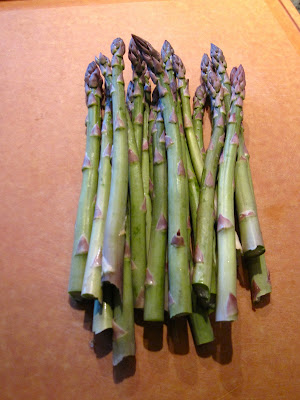My first evening at the Chef's Studio we cooked from the northern region in France, Alsace. The main course was sauerkraut, surrounded by poached chicken, sausage and boiled potatoes. I thought the paleness of the plate was beautiful, and the taste absolutely delicious. The sauerkraut reminding me more of pasta than of cabbage. There was something very home about the whole thing which, ends up, makes much sense - The food of the Alsatians is the food of the Mennonites and vice versa.
All this to say: I use the term "Mennonite food" loosely. This is not just a Mennonite or Amish story. We don't own sauerkraut, pie or pork even though we talk about them as such. There's too much sharing of the table.
A perfect example... look up zwieback (a traditional Russian Mennonite dinner roll) in the Larousse Gastronomique and you'll find that the French own it. Cook further and you realize zwieback is really just brioche rolled up a bit differently. Or maybe brioche is just zwieback?! The same reference authority, Larousse, claims vareniky (a traditional Russian Mennonite dish) is Lithuanian. With all the sharing I'm in awe we can even make categories or take ownership.
But with that said, here's some categorizations. Ahem.
We Are What We eat.
"Tell me what you eat, and I shall tell you what you are." - Brillat-Savarin
In the Mennonite culinary world...
Tell me you grew up on vareniky and borscht and zwieback and kuchen and I shall tell you, "You're from the plains, no? Kansas, Nebraska. Maybe Canada. There's something a bit Russian in your blood."
Tell me you grew up on shoofly pie, wiggle glace, rivels, every soup imaginable, and whoopie pies and I shall say, "Ah, the Swiss-German type. Pennsylvania then? Maybe Ohio, Indiana, Virginia?"
We Are Where We Eat.
The what of our food tells us the where of our people.
It's true of all cultures. Mennonite is no exception.
My intent here is to clear up why perhaps the Mennonites in Ohio may not know the likes of bierrocks and why the Kansas kind may not frequent with a rivel.
Essentially... There was a large group of Mennonites who settled in southern Russia in the 18th century, but then resettled in midwest America in the 19th century. They mostly came to Kansas, Nebraska, South Dakota and Manitoba, Canada. So the Mennonite food in these regions are primarily influenced by this Russian tradition.
There was also a group of Mennonites who came to the U.S. from Europe - Switzerland, Germany, Alsace-Lorraine. They first came to Pennsylvania but moved west far and wide: Virginia, Ohio, Indiana and so on. The migration started in 1683 and lasted until about 1824. You can probably deduce by now: Yep, those folks have some heavy northern Euro influence.
As you can see, the evolution of "Mennonite" food is so seeped in travel, migration and resettlement. Not the backpack across Europe kind. More the "we have to move because the powers-that-be are persecuting us again" kind. The kind interlaced with tragedy, slow movement, and farming, refarming, and then re-farming again. (And I thought starting my garden was hard.)
Just as my grandmother Belle picked up hot tamales in Texas, new years cookies in Kansas, and apple dumplings in Indiana, the larger Mennonite community picked up culinary traditions from the places they went - Switzerland, Germany, France, Polish Prussia, Russia, North America and so on and so forth.
Both the Swiss-German vein and the Russian vein have some fascinating, complex histories, but my basic point right now is to clarify the North American phenomenon of Mennonite food.
I'll fill you in where we're eating from as we move along as I'll be covering both traditions. My family history includes both.
So to mark the overlap, the sharing, the what, where and when... we'll be roasting a chicken with root vegetables next. Because what tradition didn't throw some stuff in an oven and call it ours? Also I have a firm belief that all people should know how to roast a chicken. More on that coming up...
























